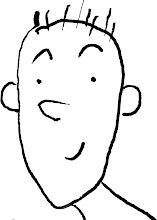What is diversity? In the corporate world this usually refers to race-- Sometimes to physical abilities. Isn’t diversity much deeper than that? Isn’t the surface differences, color, size, abilities, etc…just that- superficial? Isn’t background, perspective, personality, background add much more to the interaction? How do children approach diversity?
During preschool years, children begin to notice physical aspects of identity. At about age 2, children become increasingly aware of gender. This is followed by curiosity about skin color, hair color and texture, eye shape and color, and other physical attributes. Awareness of disabilities tends to come later; however, some toddlers begin noticing more obvious disabilities, such as a person using a wheelchair. Usually between the ages of 2 and 3, children will begin to notice cultural aspects of gender influence. For example, they may take note of the fact that girls tend to play with dolls while boys play with trucks. They may also begin to recognize ethnic differences, noticing that children eat different foods and celebrate different holidays or, conversely, do not celebrate or recognize certain holidays. As they begin to notice differences, 2-year olds may show signs of "pre-prejudice"-they may act afraid or uncomfortable. Not necessarily possessing the vocabulary to express their concerns, they may avoid or ignore a child they perceive to be different.
Or perhaps, they really don’t care. As adults we tend to look and judge things based on our world view. That person is different… that is good or that is bad. I don’t believe young children look at the world that way… we just project our adult perspective on them. I think it is more like puppies… some are black, some are brown, some are white, some spotted, etc. Don’t you think children view others like puppies? They may learn from their environment to attach some judgment to individuals, but they pretty much start with a clean slate.
In “Peep Peep Finds a Friend”, I take that child-like perspective on diversity. Oh, look at you… you look different than me… cool let’s play! This is the third book in the series and Peep Peep’s new friend “Gua Gua” is an odd duck! Literally, we never learn what kind of duck Gua Gua is or even if it is a male or female. When you are a duckling, it doesn’t really matter. Well, in reality baby ducks are imprinted on recognizing like kind, but for our story it doesn’t really matter. A friend is friend.
Have you ever had a discussion with a child about diversity? What were the circumstances and how did it go?
Johnnie
Subscribe to:
Post Comments (Atom)








No comments:
Post a Comment
www.lunchpailbooks.com appreciates your comments...